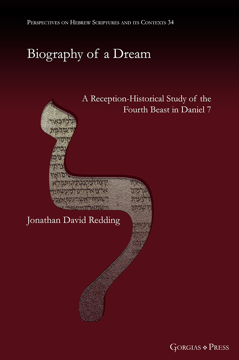Jonathan David Redding

Jonathan Redding is an Assistant Professor of Religion at Nebraska Wesleyan University in Lincoln, Nebraska. He completed a Ph.D. in Hebrew Bible and Ancient Israel, with a New Testament minor, at Vanderbilt University.
Biography of a Dream
A Reception-Historical Study of the Fourth Beast in Daniel 7
ISBN: 978-1-4632-4243-5
The biblical apocalyptic books of Daniel and Revelation are, for better or worse, polarizing. Interpreters have long read and searched these books for clues about how their worlds will “end,” which each new interpreter promising to have “unlocked” how Daniel and Revelation work together to uncover a divine plan for prophetic fulfillment. Redding uses the Vision of the Fourth Beast from Daniel 7 as a case study to consider how interpretations of texts take on lives of their own, eventually wedding interpretation with text and prompting the question: what even is a text? Is it what is on the page, something interpreters put there, or a combination of both? Starting with the literature of the Levant, this work traces the use of motifs, images, and themes through Daniel, Revelation, and into pre-Enlightenment Christian thinkers to consider hermeneutical trajectories that shaped (and continue to shape) how modern readers engage biblical apocalyptic literature.
$114.95 (USD) $68.97 (USD)

